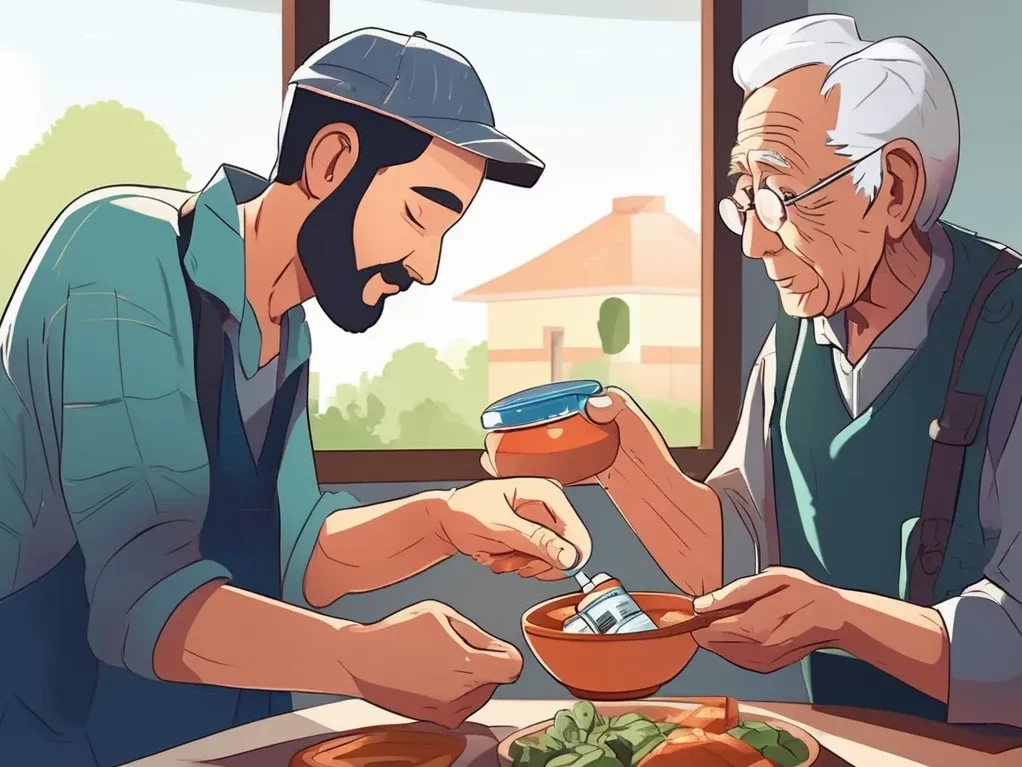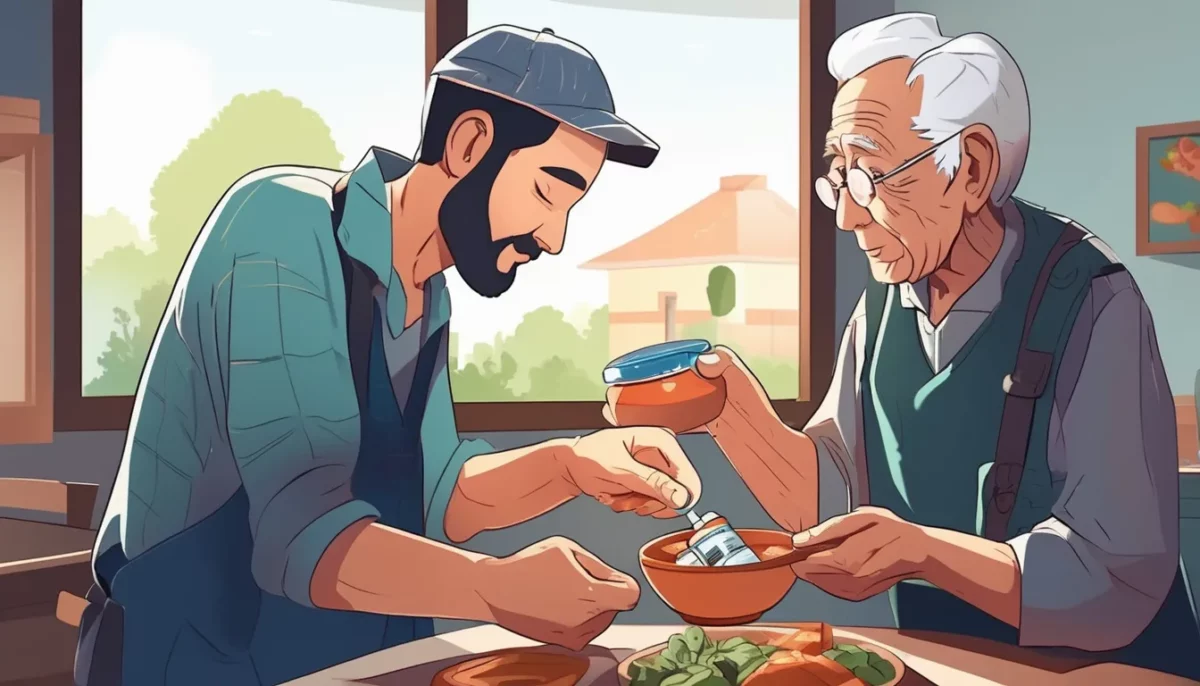The live-in care sector in England is undergoing a profound transformation. As the population ages, the demand for reliable caregivers continues to grow in major urban areas like London, Brighton, and Liverpool. Yet, despite this increasing need for senior caregivers, there remains a noticeable gap: the shortage of male caregivers. This article explores why the demand for male care givers for elders is on the rise, how the sector can benefit from more men entering the field, and why families are beginning to prefer male caretakers for elders in certain scenarios.
1. Changing Demographics and Evolving Family Dynamics
A Growing Senior Population
England’s aging population has led to a surge in the live-in care market. Seniors are choosing to remain at home rather than move to assisted living facilities, creating more opportunities for finding live in senior caregivers. However, the vast majority of these caregivers have traditionally been female, leaving a gap in the market for capable, male caregivers.
Learn more about the rights and benefits of seniors and caregivers in the UK on the official Gov.uk Care and Support page.
More Men in Caregiving Roles
Shifts in societal norms around gender roles have encouraged more men to explore careers in caring professions. This change is gradually filling the void in the live-in care sector. Families often discover that a male caregiver can provide both emotional and practical support for elderly relatives, particularly male clients who may have specific preferences or needs.
Tip: For information on professional development in the social care sector, check out Skills for Care, which offers guidance and training resources for both new and experienced caregivers.
2. Practical Benefits of Male Caregivers
Physical Strength and Support
Many senior clients require help with mobility, transfers, and other physically demanding tasks such as bathing assistance or moving from bed to chair. Male caregivers often have the advantage of additional physical strength, which can be beneficial for seniors who need consistent and safe handling.
Emotional Comfort and Compatibility
For some older adults—especially older men—there is a level of comfort and ease in receiving help from another man. This can reduce embarrassment or anxiety when dealing with sensitive personal tasks, enhancing the reliable caregivers-client relationship. Having someone of the same gender can lead to:
- Shared Interests: Whether it’s enjoying a game on television, discussing a favorite sports team, or reminiscing about life experiences, a senior male client might feel more at ease with a male caregiver who shares similar interests.
- Open Conversation: Topics like certain health concerns or social issues can feel less awkward to discuss when both parties share the same gender. This fosters trust and encourages better communication.
A Sense of Security
Some families prefer male caretakers for elders for added peace of mind. Especially in neighborhoods where families worry about safety, having a physically capable caregiver can help reassure loved ones that their senior family member is well protected.
3. Current Shortage of Male Caregivers
Traditional Gender Stereotypes
The caregiving profession has historically been viewed as “women’s work,” contributing to a significant gender gap in this field. Many men who might excel in live-in care roles may not have considered it a viable career option due to outdated stereotypes.
Lack of Awareness
The job market is filled with potential candidates, but many of them are unaware of the opportunities and benefits of becoming a senior caregiver. The healthcare sector—particularly live-in care—doesn’t always reach out to men or highlight how rewarding a career in caregiving can be.
Limited Visibility and Representation
A quick look through online job portals or agency listings often shows a common theme: most postings emphasize female caregivers. This imbalance makes it harder for families looking specifically for a male caregiver to find the right match. Moreover, potential male applicants might not see many examples of other men succeeding in the field, discouraging them from applying.
Did you know? Organizations like Carers UK provide a wealth of information on carers’ rights and support services, which can be instrumental for anyone considering a career in live-in care.
4. Closing the Gap: Why More Male Caregivers Are Needed
Meeting Client Preferences
Seniors and their families increasingly request male care givers for elders for various reasons—be it cultural sensitivity, personal comfort, or the need for physical support. By providing more male options, agencies can better cater to a broader range of clients.
Diverse Skill Sets
A balanced workforce combining both male and female caregivers can enrich the care environment. Each caregiver brings unique experiences and perspectives, making it easier to match seniors with someone whose personality, skill set, and outlook align with their needs.
Reducing Burnout and Overload
The shortage of men in the caregiving field places a heavier workload on the predominantly female workforce. Encouraging more men to join can help distribute responsibilities more evenly, reducing burnout and enhancing the quality of care.
5. How Agencies Can Encourage Male Caregivers
- Promoting Success Stories
- Showcase testimonials and interviews of male caregivers who have found rewarding careers in live-in care. Hearing personal stories from men who have thrived in the field can inspire others to follow suit.
- Gender-Neutral Job Advertisements
- Agencies should revise their wording to appeal to both sexes. Phrases like “compassionate caregiver” rather than “compassionate female caregiver” open the door to all qualified applicants.
- Education and Training
- Offering workshops or courses on topics like emotional intelligence, communication skills, and specialized care for male seniors can reduce the skill gap and encourage men to apply.
For up-to-date caregiver training standards, consult the Care Quality Commission (CQC) guidelines or the National Institute for Health and Care Excellence (NICE) recommendations.
- Highlighting Career Advancement
- Demonstrate clear pathways for promotion—such as lead caregiver, care coordinator, or managerial positions—to show that caregiving is not just a job but a viable, long-term career.
6. The Role of Carers Living at Home in Filling the Gap
Carers Living at Home is uniquely positioned to address this shortage by actively recruiting and supporting male caregivers. Through strategic initiatives that focus on outreach, training, and community engagement, the agency aims to provide seniors in London, Brighton, and Liverpool with an expanded pool of qualified caregivers.
Tailored Recruitment Programs
By attending career fairs, hosting informational seminars, and partnering with community organizations, Carers Living at Home can reach potential male caregivers who may have never considered a role in care.
Supportive Work Environment
Creating a culture of support, mentorship, and growth for all caregivers—especially men—fosters a stronger, more cohesive team. This includes offering flexible shifts, mental health resources, and opportunities for professional development.
Client-Caregiver Matching
For families finding live in senior caregivers who meet specific preferences—such as needing a male caretaker for elders—Carers Living at Home specializes in personalized matching. The process takes into account a senior’s lifestyle, medical requirements, and personality to ensure the best fit.
7. Why Male Caregivers Are a Game-Changer for Live-In Care
- Enhanced Comfort and Trust: Seniors, especially men, may find it easier to confide in a caregiver of the same gender.
- Comprehensive Support: From helping with physically demanding tasks to engaging in meaningful conversation, male caregivers address diverse needs.
- Reducing Healthcare Burdens: Having the right caregiver at home can prevent hospital readmissions, accidents, or injuries due to insufficient physical support.
8. Looking Ahead: A More Inclusive Future
A more balanced live-in care sector—one that includes a greater number of men—stands to benefit everyone. Seniors gain new opportunities for personalized care, while caregivers enjoy a more dynamic, equitable workspace. Families benefit too, as they find it easier to locate reliable caregivers who understand the unique needs of their loved ones.
To truly fill this gap, agencies, healthcare institutions, and local communities must work together. By challenging stereotypes, offering comprehensive training programs, and highlighting the value of male caregivers, we can shape a future where male care givers for elders are more accessible, better recognized, and fully supported.
Conclusion
The shortage of male caregivers in the live-in care sector is a multifaceted issue—rooted in historical stereotypes, lack of representation, and limited visibility. Yet, solutions are both achievable and urgent. Families across London, Brighton, and Liverpool want quality care for their loved ones, and male caretakers for elders provide a crucial piece of that puzzle.
If you’re considering finding live in senior caregivers, or you’re a man interested in pursuing a career in live-in care, now is the time to act. The future of caregiving is inclusive, and male caregivers have an essential role to play in delivering the compassionate, reliable support seniors deserve. By joining forces with forward-thinking agencies like Carers Living at Home, we can all work together to fill this gap—ensuring that every senior has the opportunity to thrive in the comfort of their own home.
For more information on supporting older adults at home, visit Age UK, which offers helpful resources and guidance for families and caregivers alike.

